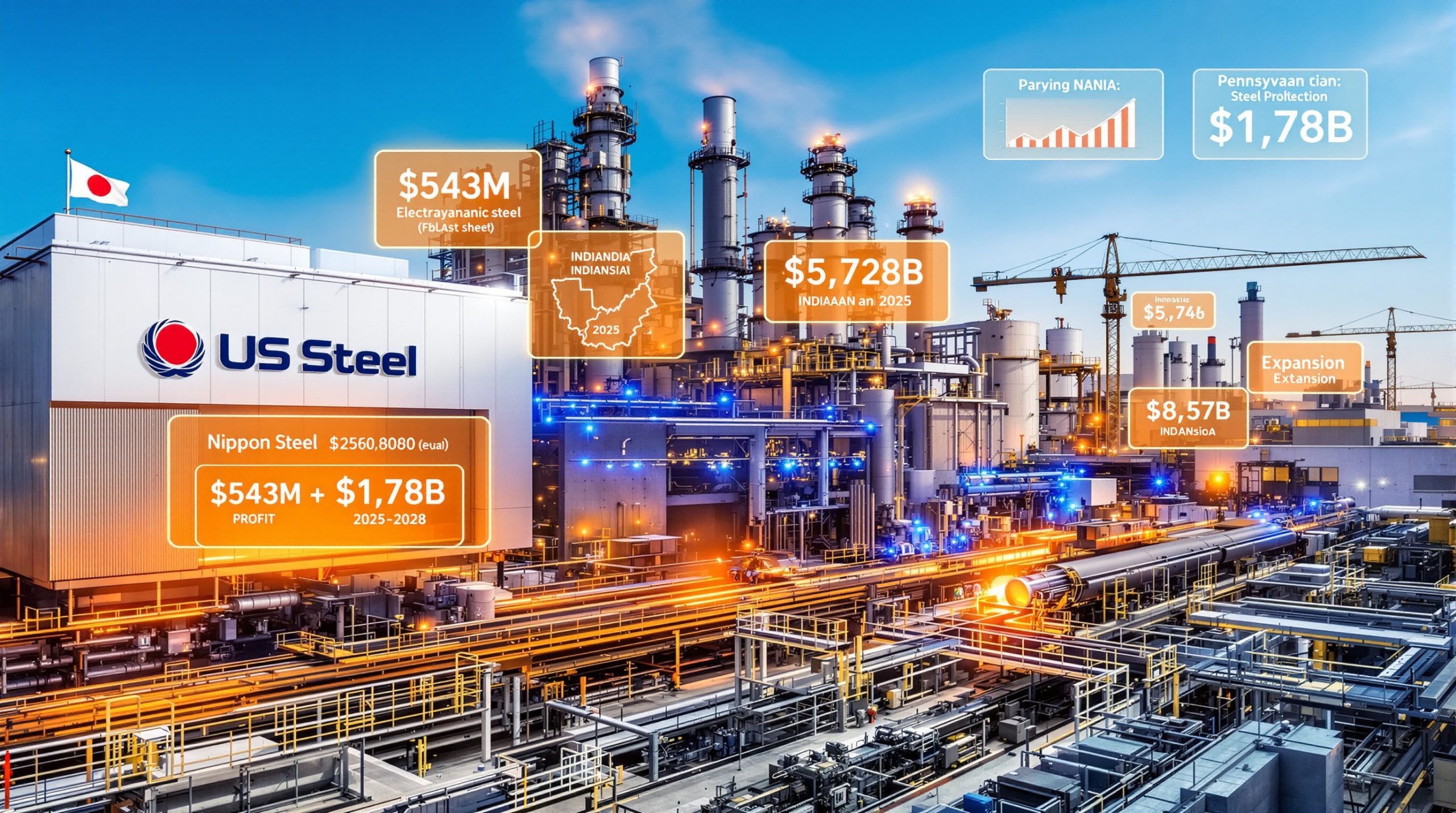What's Happening in the Coke Market?
The coke and coal market news reveals a significant shift in supply-demand dynamics, with several key factors driving price movements across China. According to the latest analysis from Shanghai Metal Market (SMM), production restrictions among loss-making coke producers have continued, creating upward pressure on prices despite challenging economic conditions.
"Some coke producers have incurred losses and are still maintaining production restrictions," reports SMM in their July 11, 2025 analysis. This disciplined approach to production has resulted in declining inventory levels at production facilities, as shipments remain smooth despite the reduced output.
The fundamentals of the coke and coal market news are gradually trending toward equilibrium after experiencing a period of significant imbalance. This adjustment has created conditions where "leading coke producers have already initiated price increases," according to SMM's market observations.
Supply-Demand Balance Shifting
The ongoing production restrictions have proven effective in rebalancing the market. Loss-making producers have remained disciplined by limiting output, which has contributed to inventory reductions across production facilities. This controlled supply approach has strengthened producers' negotiating positions when dealing with steel mills.
The smooth shipment patterns observed throughout the supply chain indicate efficient logistics operations despite the production constraints. This efficiency has allowed coke producers to reduce their on-site inventories systematically while maintaining reliable deliveries to steel manufacturers.
Industry analysts note that this careful balancing act between restricted production and consistent shipments has been instrumental in moving the market toward equilibrium. The disciplined approach by producers demonstrates sophisticated market management in response to challenging profit margins and evolving mining industry trends.
Price Metrics and Regional Variations
Current price metrics across different coke qualities reveal significant variations based on production methods and quality specifications:
| Coke Type | Production Method | National Average Price (¥/mt) |
|---|---|---|
| Prime metallurgical | Dry quenching | 1,440 |
| Quasi-prime metallurgical | Dry quenching | 1,300 |
| Prime metallurgical | Wet quenching | 1,120 |
| Quasi-prime metallurgical | Wet quenching | 1,030 |
These price differentials highlight the premium commanded by dry-quenched coke, which offers superior quality characteristics. Dry quenching technology uses inert gases rather than water to cool hot coke, resulting in stronger coke with lower moisture content—attributes that significantly improve blast furnace efficiency.
The 28.6% price premium for dry-quenched prime metallurgical coke over its wet-quenched counterpart underscores the value steel producers place on higher-quality inputs. This quality differential becomes especially important during periods when steel mills face moderate profit margins and need to optimize their production efficiency.
Regional price variations further complicate the market landscape, with transportation costs, local supply-demand dynamics, and quality differences creating notable price disparities between major production centers. Coastal regions often command higher prices due to their proximity to steel mills and port facilities.
Market Sentiment and Future Outlook
Producer sentiment has strengthened considerably in recent weeks, with SMM reporting "strong reluctance to sell among coke producers" at current price levels. This resistance to accepting lower prices indicates growing confidence in the market's direction.
The futures market performance has created additional upward pressure on prices, with rallies in coke futures contracts on the Dalian Commodity Exchange pulling up spot market sentiment. This connection between futures and physical markets has reinforced positive price expectations among market participants.
The short-term forecast suggests stabilization or further strengthening of coke prices. Industry experts anticipate "another round of price increases next week" (July 14-18, 2025), as leading producers capitalize on the improving market fundamentals to boost margins.
Market Analysis Note: The balance between production discipline and demand support has created a favorable environment for coke producers to regain pricing power after a challenging period of margin compression.
How is the Coking Coal Market Performing?
The coking coal segment, a critical input for coke production, is displaying its own distinct market dynamics with regional variations and supply adjustments influencing price trajectories. Recent iron ore trends have also impacted the broader materials market, creating ripple effects throughout the steelmaking supply chain.
Current Price Points and Regional Differences
Regional pricing data reveals notable variations across major production areas:
- Linfen low-sulfur coking coal is currently quoted at ¥1,180/mt
- Tangshan low-sulfur coking coal commands a premium at ¥1,200/mt
This ¥20/mt premium for Tangshan material likely reflects stricter quality control, advantageous location relative to major steel production centers, and potentially lower impurity levels. The sulfur content—typically maintained below 0.7% for premium coking coal—is a critical quality parameter for blast furnace operations.
The regional differences extend beyond simple geography, encompassing important quality variations that directly impact steelmaking efficiency. Premium low-sulfur coking coal reduces the need for additional desulfurization in the steelmaking process, justifying the price premium for materials from regions known for consistently higher-quality production.
Supply Factors Influencing the Market
A significant development in the coking coal supply landscape is the resumption of operations at previously closed mines. According to SMM, "some rectified mines have resumed production" following completion of mandatory safety and environmental compliance upgrades.
These mine rectifications—referring to comprehensive safety and environmental improvements required by Chinese regulatory authorities—had temporarily constrained supply. The completion of these upgrades has allowed affected operations to return to production, with an anticipated increase in overall supply volumes in the coming weeks.
The market is experiencing an active transaction environment, with SMM reporting that "market transactions remain active, coking enterprises' procurement enthusiasm has improved." This heightened procurement activity indicates confidence in near-term demand and pricing.
Logistics operations have remained efficient, with "mine shipments are smooth" according to market participants. This operational efficiency has ensured steady flow of materials from production sites to coking facilities and onward to steel manufacturers, maintaining supply chain integrity despite the earlier production constraints.
Market Direction and Price Expectations
Market sentiment in the coking coal sector has turned increasingly positive, with SMM noting that "market sentiment is positive" and "auction transaction prices generally rising." The strength in auction prices is particularly significant as it represents real-time market valuation and competitive bidding dynamics.
The short-term forecast suggests coking coal prices will "test marginal increases" as the market absorbs the additional supply from resumed mine operations. This controlled price growth reflects the balancing effect of improved procurement enthusiasm against the anticipated supply expansion.
Industry analysts caution that the supply increases may moderate price growth in the medium term. However, the current positive sentiment and auction performance suggest that near-term price support remains intact despite the supply-side developments. Various global metal tariffs could further influence price trajectories as international trade dynamics evolve.
Expert Insight: The coking coal market is demonstrating resilience in the face of supply increases, suggesting underlying demand strength is sufficient to absorb additional production without significant price deterioration.
What's Driving Steel Mill Demand for Coke?
Steel production dynamics remain the primary driver of coke demand, with multiple factors influencing procurement strategies and inventory management at mill operations.
Steel Industry Performance Indicators
According to SMM's market analysis, "finished steel products remain resilient" in terms of demand, providing fundamental support for raw material requirements. This resilience in finished steel demand has maintained production rates at levels sufficient to sustain consistent coke consumption.
Steel mill profitability, described as "moderate" by SMM, has enabled continued procurement of raw materials despite input cost pressures. This profitability level, while not exceptional, has provided mills with sufficient financial flexibility to maintain operations and secure necessary inputs.
The futures market performance has played an important role in bolstering confidence among steel producers. SMM reports that "the futures market has held up well," creating positive sentiment that has translated into more aggressive procurement strategies for essential inputs like coke.
These factors have collectively enhanced steel mills' enthusiasm for raw material procurement, with SMM noting improved "coke procurement enthusiasm" among steel manufacturers. This improved buying interest has strengthened demand-side support for coke prices.
Impact on Coke Procurement Strategies
Steel mills have demonstrated increased willingness to secure coke supplies as market conditions have evolved. The combination of resilient steel demand, positive futures performance, and expectations of further coke price increases has prompted more proactive inventory management.
Many mills have engaged in strategic inventory building, securing additional volumes in anticipation of the price increases anticipated by market analysts. This forward-looking procurement approach represents a shift from the just-in-time inventory management that often prevails during uncertain market conditions.
Current procurement patterns reflect growing confidence in near-term steel demand, with mills balancing immediate production requirements against expectations of continued price support. This confidence is particularly notable given the challenging economic environment in certain downstream sectors influenced by broader US economic factors.
The strategic approach to coke procurement illustrates the sophisticated balance steel manufacturers must maintain between immediate operational needs and future price expectations. Mills with stronger financial positions have generally been more aggressive in building inventories, while those with tighter margins have remained more cautious.
| Steel Mill Strategy | Approach to Coke Procurement | Market View |
|---|---|---|
| Proactive | Building strategic inventories | Bullish on demand and prices |
| Balanced | Meeting production needs with modest buffer | Cautiously optimistic |
| Conservative | Just-in-time purchasing | Concerned about demand uncertainty |
This range of procurement strategies reflects varying perspectives on market direction and financial capacity among steel producers, creating a multifaceted demand environment for coke suppliers.
How Are Market Fundamentals Affecting Price Movements?
The interplay between supply and demand factors, coupled with futures market influence, has created a complex environment for price formation in the coke and coal markets.
Supply-Side Economics
Production restriction strategies have been a dominant feature of the supply landscape, with SMM confirming that loss-making facilities have maintained disciplined output controls. These restrictions have prevented supply oversaturation despite challenging profitability conditions for some producers.
Inventory reduction has occurred through consistent shipment patterns, with SMM reporting that "coke inventories at coke producers have continued to decline." This systematic reduction in production-site inventories has strengthened producers' market positions and supported price stability.
The sentiment among producers has notably strengthened, with increasing reluctance to sell at current price levels. This price-holding sentiment has created conditions where buyers must accept higher prices to secure necessary volumes, particularly as inventories continue to tighten.
Strategic production decisions based on profitability metrics have become increasingly sophisticated, with producers carefully balancing volume against price to optimize financial performance. This calculated approach to production management demonstrates the market's maturation and participants' growing experience in navigating challenging conditions.
Demand-Side Dynamics
Steady steel production has maintained consistent coke consumption levels, providing reliable demand-side support for the market. The absence of significant production curtailments at steel mills has ensured predictable offtake volumes for coke producers.
Moderate steel mill profitability has supported procurement activities despite input cost pressures. This financial resilience has allowed mills to maintain operations and continue raw material purchases even as they navigate challenging margin environments.
The futures market performance has created positive sentiment throughout the supply chain, with SMM noting that futures market rallies have "elevated market sentiment." This positive sentiment has translated into more confident buying behavior and reduced price resistance.
The combination of these factors has resulted in a more balanced demand-supply ratio emerging after a period of significant imbalance. This rebalancing has created conditions more favorable to price stability and potential appreciation than were present in previous months. Market participants continue to monitor the iron ore forecast as it often correlates with broader trends in steelmaking raw materials.
Futures Market Influence
Upward price pressure from futures trading activity has become increasingly influential in physical market dynamics. The positive performance of coke and coal futures contracts has created price expectations that have pulled spot market levels higher.
Market sentiment has been enhanced through derivatives performance, with successful futures trading creating a positive feedback loop that reinforces confidence in the market's direction. This sentiment boost has supported physical market prices even when immediate fundamentals might suggest more moderate levels.
The correlation between spot and futures prices has strengthened in recent periods, creating more predictable relationships between the two market segments. This stronger correlation has improved market participants' ability to use futures as effective hedging and price discovery tools.
Trading patterns indicate expectations of continued price support, with futures positioning suggesting market participants anticipate sustained strength rather than significant corrections. This confidence in future price levels has translated into more aggressive spot market behavior.
Market Insight: The convergence of disciplined supply management, steady demand, and positive futures market performance has created a fundamentally stronger market environment than was present earlier in the year.
FAQ: Key Questions About the Coke and Coal Markets
What factors are currently supporting coke prices?
Multiple factors are providing upward support for coke prices in the current market environment:
-
Production discipline: SMM reports that "some coke producers have incurred losses and are still maintaining production restrictions," limiting supply growth despite challenging profitability.
-
Inventory reduction: According to market analysis, "coke inventories at coke producers have continued to decline," creating tighter supply conditions that support price levels.
-
Resilient steel demand: The market shows "finished steel products remain resilient" in terms of demand, maintaining consistent coke consumption requirements.
-
Futures market strength: The "futures market has held up well," creating positive sentiment and price expectations that support physical market levels.
-
Producer price initiatives: "Leading coke producers have already initiated price increases," demonstrating confidence in market fundamentals and ability to pass through higher costs.
These factors collectively create a supportive environment for coke prices, with additional increases anticipated in the near term as market participants adjust to the evolving supply-demand balance.
How are steel mill profits affecting the coke market?
Steel mill profitability plays a critical role in coke and coal market news dynamics through several mechanisms:
-
Procurement stability: SMM characterizes steel mill profits as "moderate," allowing for consistent procurement of coke despite input cost pressures.
-
Price acceptance: Moderate profitability provides mills with sufficient financial flexibility to accept reasonable price increases from coke suppliers without significant resistance.
-
Production maintenance: Sustained steel production levels, supported by adequate profitability, ensure consistent coke consumption and reliable demand.
-
Strategic inventory management: Mills with healthier profit margins can build strategic coke inventories in anticipation of price increases, supporting current demand levels.
The moderate profitability levels currently observed in the steel sector create a balanced environment where mills can maintain operations and raw material procurement while still exercising some price discipline in negotiations with suppliers.
What is the relationship between coking coal and coke prices?
Coking coal and coke prices maintain a complex relationship driven by several key factors:
-
Cost structure impact: Coking coal typically represents approximately 90% of coke production costs, making it the primary cost driver for coke producers.
-
Pass-through mechanics: Current coking coal price movements (e.g., Tangshan low-sulfur at ¥1,200/mt) create cost pressure that coke producers attempt to pass through to steel mills.
-
Timing differentials: Coking coal price changes generally precede coke price adjustments, creating temporary margin compression or expansion for coke producers during transition periods.
-
Quality correlations: Premium coking coal (low-sulfur varieties) produces higher-quality coke that commands better pricing, creating parallel quality-price relationships across both products.
The current coking coal market conditions, with prices testing "marginal increases" according to SMM, support the case for coke price increases as producers seek to maintain viable margins amid rising input costs.
What regional variations exist in the coke market?
Significant regional variations characterize the coke market, creating a complex pricing landscape:
-
Quality differentials: Dry-quenched coke commands a substantial premium (28.6%) over wet-quenched varieties due to superior physical and chemical properties.
-
Location advantages: Production facilities with proximity to major steel manufacturing centers or transportation hubs realize logistical cost advantages that influence pricing.
-
Environmental compliance: Regions with stricter environmental regulations generally produce higher-cost (and often higher-quality) coke that commands premium pricing.
-
Transportation impact: Logistics costs create natural price differentials between regions, with prices typically higher in areas requiring longer transportation distances.
These regional variations create a stratified market where price differences reflect not only quality considerations but also geographical and regulatory factors that influence production and delivery costs.
Market Outlook: Short-Term Projections
Price Trend Expectations
The short-term outlook for coke prices appears supportive, with SMM anticipating that prices will "remain stable or strengthen" in the immediate future. Market analysts expect "another round of price increases next week" (July 14-18, 2025) as leading producers capitalize on improving fundamentals.
Coking coal prices are expected to "test marginal increases" as the market absorbs additional supply from resumed mine operations. While supply expansion may moderate price growth, current demand strength appears sufficient to prevent significant price deterioration.
The overall raw material complex for steelmaking is showing continued firm support for prices, with balanced fundamentals creating conditions more favorable to stability or appreciation than significant corrections.
Key Indicators to Monitor
Market participants should closely track several critical indicators to anticipate future market movements:
-
Steel mill inventory levels: Changes in coke stockpiles at steel mills provide early signals of shifting procurement strategies and price expectations.
-
Futures market performance: Continued strength
Ready to Stay Ahead of Major Mineral Discoveries?
Gain immediate alerts on significant ASX mineral discoveries with Discovery Alert's proprietary Discovery IQ model, turning complex data into actionable insights for informed investment decisions. Explore how historical discoveries have generated substantial returns by visiting Discovery Alert's dedicated discoveries page and begin your 30-day free trial today.




